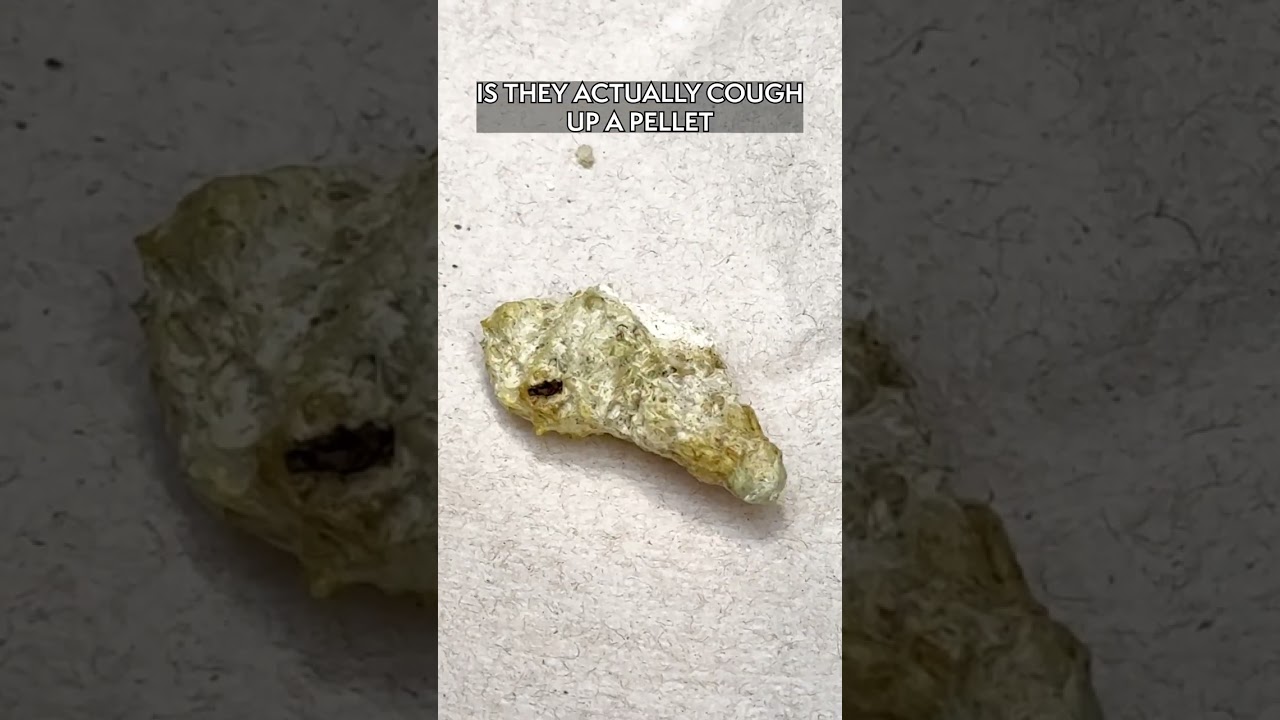Summary:
– Owl pellets are regurgitated balls of indigestible materials, mainly consisting of bones and hair.
– Owls produce pellets as a way to cleanse their digestive system and get rid of waste.
– The study of owl pellets provides valuable insights into the diet, behavior, and ecology of these fascinating creatures.
– Owl pellets are often used by scientists, educators, and nature enthusiasts to learn about the local wildlife and promote environmental awareness.
– Exploring owl pellets can be a fun and educational activity for people of all ages, providing a hands-on experience with nature and wildlife.
In our final entry of the ODDtober Spooky A Cutie video series, we have a peculiar topic that might leave you scratching your head in curiosity and fascination. We’re talking about owl pellets, or as some like to call them, bone-and-hair balls. Yes, you heard it right! These nocturnal raptors, known for their hunting prowess, have an unexpected method of cleansing their digestive system. They regurgitate what’s left of their meals in these intriguing pellets.
So, what exactly are owl pellets? Well, they are compact wads of indigestible materials, primarily consisting of bones and hair. When an owl consumes its prey, it essentially swallows it whole. The edible portions are then broken down and absorbed in its stomach, while the indigestible parts, such as the bones, hair, feathers, and other debris, are formed into a compact pellet.
You might wonder why owls go through all the trouble of regurgitating their leftovers instead of simply excreting them. It turns out that owls have a unique digestive system that can’t process certain materials. Their stomachs lack the digestive enzymes necessary to break down things like bones and hair. This is where the owl pellets come into play. By regurgitating these pellets, owls cleanse their digestive system and eliminate waste.
Now, you might be thinking, “Why should I care about owl pellets?” Well, the study of owl pellets provides valuable insights into the diet, behavior, and ecology of these magnificent creatures. By carefully dissecting these pellets, researchers and scientists can identify the remains of various prey species. This information helps them understand the owls’ preferred food sources, feeding patterns, and prey abundance in a given area.
Not only are owl pellets a fascinating research tool, but they also serve as valuable educational resources. Teachers, educators, and nature enthusiasts frequently use them as teaching aids to promote environmental awareness and hands-on learning. Dissecting an owl pellet allows students to actively engage with nature and develop a deeper understanding of the food chain, animal anatomy, and ecological interconnections.
Imagine the excitement on a child’s face as they carefully unwrap an owl pellet, uncovering tiny bones, skulls, and even intact teeth. It’s like unwrapping a hidden treasure trove, revealing the secret lives of the creatures that roam our forests and meadows. Owl pellets provide a tangible connection to the natural world, fostering curiosity and a sense of wonder for the wildlife around us.
Now, let’s delve into the process of exploring owl pellets. Just like any scientific endeavor, a little preparation goes a long way. To get started, you’ll need to acquire some owl pellets. Don’t worry; you won’t have to enter the woods at night to find them. There are numerous educational suppliers and online stores where you can purchase owl pellets for study purposes.
Once you have your owl pellets in hand, give them a close look. You’ll notice that they range in size depending on the species of owl and the size of its prey. Larger owls like the Great Horned Owl produce larger pellets, while smaller owls like the Screech Owl produce smaller ones. The exterior of the pellet is often covered in a thin layer of fur or feathers, giving it a unique texture.
Now, it’s time to carefully dissect the pellet. You can use simple tools like tweezers, toothpicks, or fingers. Gently break apart the pellet, revealing the hidden contents within. You’ll be amazed at the assortment of bones, from tiny rodent ribs to larger bird skulls. The bones might appear dark and bleached as if carefully aged over time. The hair and fur intertwined with the bones add an extra element of intrigue.
As you continue exploring, you might encounter other surprising finds, such as insect exoskeletons or even small skulls with intact teeth. Each discovery presents an opportunity to learn about the creatures that share our environment and the complex interactions between predators and prey.
If you’re feeling adventurous, you can even try to reconstruct the skeletons of the animals by matching bones and identifying their origins. This can be a challenging but rewarding task that further hones your observation skills and knowledge of animal anatomy.
Whether you’re a student, a teacher, or an avid nature lover, exploring owl pellets offers a unique and interactive way to connect with wildlife. It opens doors to a world rarely seen, unlocking the secrets of these beautiful nocturnal hunters. By engaging with owl pellets, we gain a deeper appreciation for the delicate balance of nature and the intricate web of life surrounding us.
So, next time you stumble upon an owl pellet, don’t be repelled by its appearance. Embrace the opportunity to embark on a journey of discovery. Who knows what hidden wonders you may find within those bone-and-hair balls?
*****
Source Description
In this final entry in our October Spooky A Cutie video series, we thought you should know about owl pellets. Sure, these nocturnal raptors are noble hunters, but when it comes to digestion, they can’t quite clean their plates. What’s leftover from their meals comes back up as a … well, you’ll have to watch.
#biology #owl #owls #owlpellet #eating #nature #til #todayilearned #didyouknow #dyk #bizarre

